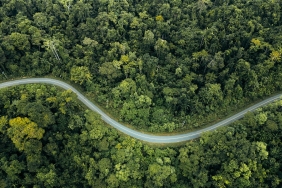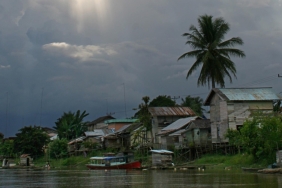ILLEGAL WILDLIFE TRADE: FROM MARKET TO GADGET
Asia is the center of various protected wildlife trade. It also the source, the transit point, and the market for selling endangered and high-value wildlife. According to the International Enforcement Agency, this crime is fourth placed in the transnational organized crime rankings, after the narcotics trade, human trafficking, and arms trafficking.
The Ministry of Environment and Forestry in the book “Portrait of Wildlife Trade in Indonesia (2016)” written by Arief Santosa states that the circulation of money to the illegal wildlife trade on the black market is estimated to reach a value of US $ 7.8 - 19 billion annually. The Indonesian government through the Directorate General of Forest Protection and Nature Conservation stated that the value of state lost due to this crime reached more than nine trillion per year (PHKA, 2009). This multimillion-dollar business threatens the protected animals such as tigers, elephants, rhinos, and other animals that have key functions for ecosystems and biodiversity.
The rampant of protected animals trade caused by the high demand from the public, as a body part or live animal. It is undeniable that the belief of owning wild animals, consuming its body parts, or even made as displays is still considered to be a personal pride or bourgeois lifestyle. The Body parts of wild animals are believed as traditional medicines to cure various diseases, even though they are not scientificaly proven.
In the past, the illegal trade of protected wildlife took place in traditional markets, now it can accessed through social medias. This method was chosen because it is far more effective and has a lower risk. This crime can be considered as a low risk-high value crime, which means that it is riskless for the perpetrator but still profitable. The ease of accessing online sites and falsifying the identity of traders make it difficult to stop. The illegal trade business for wildlife is increasing because the number of animals raising communities are expanding.
Reported by mongabay.co.id, WWF-Indonesia's data in 2015 noted that during the last 10 years in Sumatra, there were at least eight tons of elephant ivories, 100 individual orangutans, 2,000 lemurs, 2,000 pangolins, and one million turtle eggs illegally hunted and traded. Throughout 2017 itself, 2,500 advertisements on Facebook have been identified, 2,207 ads on Instagram, and 195 advertisements in E-commerce that sell wild animals, as body parts or live animals.
The illegal trade of protected wildlife is like iceberg phenomenon, where the real number and original value of this crime can far exceed the recorded numbers and values. The criminals are camouflaged but very well organized involving the international mafia network, thus making it difficult to ascertain the actual loss caused by the practice of this illegal trade.
There are many parties involved in illegal wildlife trade networks, from hunters, collectors, distributors, factory workers, marketers, to export and retail business. One of the wildlife trade watchdog organizations, TRAFFIC mentioned that many of us whether consciously or not were involved in illegal wildlife trade in various ways, through helping the trade process, becoming consumers, and by doing nothing to discover the practice of this crime. For this reason, it is necessary to realize that illegal wildlife trade is a criminal act and must be stopped immediately.
Therefore what can we do to contribute to stop the illegal trade chain of protected wildlife? You can start by not consuming anything deriving from protected wild animals, not owning wild pets, not using its body parts as collections or displays, and not for any other purpose in relation to this matter. In addition, you can also report it directly through the application called “E-Pelaporan Satwa Dilindungi” available on Play Store. Let us break this chain of crime and save the nature from the threat of extinction.




